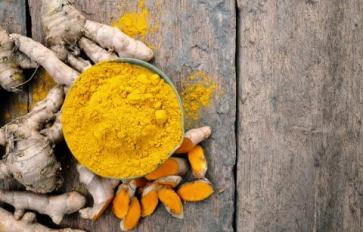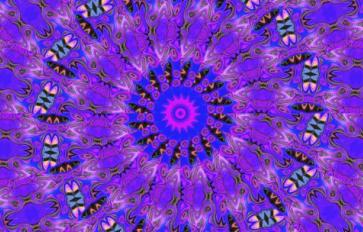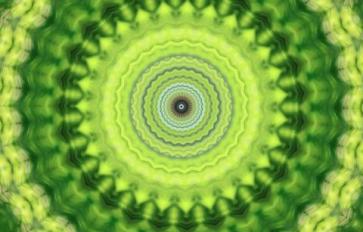
If you are on the road to figuring out how to feel your healthiest, it is likely you'll want to embark on an elimination diet to understand which foods make you feel less than your best. And no doubt about it, an elimination diet can help you figure out if dairy is what causes you to bloat, or if nuts are what give you that hollow feeling in your stomach, or if it's wheat giving you chronic headaches. Sometimes the weeks put into eliminating one food group from your life after another gives you a better understanding than simple blood tests since those tests can give false results but you know exactly how you feel when you eat something. The problem is we don't always have weeks to focus on eliminating foods, so luckily there is another way to help garner clues into your own personal body's yays and nays, and it happens to be how I started to put together my own puzzle of food intolerances. The alternative I'm referring to can be summed up in one word...kitchari. Well, actually two words, kitchari cleanse.
Kitchari is an Ayurvedic dish that is made up of mung dahl and rice, mixed with certain spices prepared in ghee. It is my understanding that this is a common home meal in India and everyone has their own way of making it, so there are plenty of recipes to be found online, but I like making it the way my master herbal teacher taught us in class, which is a very simple variation that I'll post below. To understand how healing kitchari truly is, one must know a bit about Ayurveda, which is the ancient Indian healing system that is still in practice today. Ayurveda recognizes three doshas: Vata, Pitta, and Kapha, which are part of every single person in different proportions. To put it extremely simply, if we are made up of 10 parts, one person may be 1 part Kapha, 2 parts Vata, and 7 parts pitta, while someone else is 4 parts Kapha, 4 parts pitta, and 2 parts Vata and so on. Usually people do have one primary dosha which is the one that can most easily become aggravated, though any dosha could be out of balance in any body. Ayurveda seeks to keep all aspects balanced, so if a person is primarily Vata and their Vata is aggravated, causing problems such as anxiety or constipation, then Ayurvedic method would include balancing out Vata in that person. The same is true for the other doshas. In other words, knowing your dosha make-up helps you understand how to counter the primary's tendency to spin out of control. This is something that sometimes causes a bit of confusion as some people get the idea that if they are primarily Pitta, for example, then they should enhance their Pitta qualities. The opposite is true. If one is primarily Pitta, one should focus on countering those qualities, not fanning those flames. (And Pittas can indeed be fiery!) One way to work on this is through eating foods that balance out the aggravated dosha. Kitchari is known as tri-doshic because it is actually balancing to all three doshas and that is what makes it so healing. It can be used as a cleanse by eating nothing but kitchari for 3 days or 6 days, or whatever amount of time you choose, though my herbal teacher suggested 6 days as best. What that means exactly is eating three meals of kitchari per day for six days without restricting the amount of the meals, but not stuffing oneself either. This allows the digestive system to heal because it is not taking in aggravating foods, plus the food it is taking in is health enhancing to the digestive system. This is how I figured out my biggest barrier to feeling my best was gluten. After doing a kitchari cleanse which had me feeling fantastic – no bloating, no headaches, less stress and anxiety, I felt like I could even see better and definitely think better. Then once I started eating wheat again, all those symptoms came right back. As much as I didn't want to admit it, it was more than obvious what my biggest bugger was, and it only took six days of cleansing to figure it out. Well, seven I guess, since I didn't know until after the cleanse was over and started to eat my regular foods again. Still, that beats the weeks of eliminating one food at a time, but of course, it is indeed a matter of personal tastes. If nothing else, kitchari is a great dish to have in the fall because it is warm, comforting, and somehow peace-inducing. As I said earlier, there are plenty of recipes online, but the simplest one I've found is the one my herbal master gave out and it's the one I still use today, albeit with one little spicy addition and a change in the rice used. But using a kitcharai cleanse makes it that easy to modify to your own personal tastes. Here's that recipe:
Kitchari Recipe:
1 C mung beans, soaked overnight in water
1 C brown basmati rice (my herbal teacher actually used white basmati rice, so your choice really)
1 tbsp. ghee
1 tbsp. each turmeric, cumin, coriander, and ginger (ginger is the spice I added to the basic recipe because it suits my Vata dosha. If you know your dosha tendencies, then use accordingly, but if you do not, then omit the ginger just to be on the safe side.)
After soaking the mung beans overnight (or at least 6 hours), cook them in 4 C of water until they are thoroughly soft, about half an hour.
Cook rice according to its instructions, depending on white or brown, then mix together with beans.
Brown Basmati Rice Recipe:
Warm the ghee in a sauce or sauté pan and add the spices, cooking until fragrant, about 2 minutes or so.
Mix the spices and ghee with the rice and beans and you are finished.
Eat often and be well. Good health to you and yours!
The author has no financial or other affiliation with any brands/products mentioned or shown.







